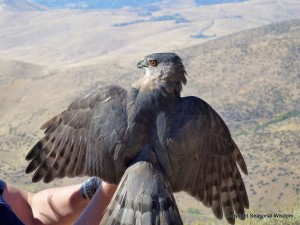
When it comes to observing raptors, such as this gorgeous Cooper’s Hawk, there are few places in the western United States better than the Idaho Bird Observatory (IBO), now known as the Intermountain Bird Observatory. This non-profit research unit of Boise State University is world-renowned for the diversity of raptors and songbirds that migrate through this region in the autumn.
To understand why this area is so important for bird migration, Seasonal Wisdom spent the day at the observatory. Come along on our tour and see some of these amazing birds up close.
In the early 1990s, Boise State University researchers discovered that the Boise Ridge — just a few miles from Idaho’s capital — featured one of the largest known raptor and songbird migrations in the western United States during the fall. It’s a popular resting spot in the autumn for a vast number of birds migrating from Canada to Mexico.
As IBO executive director Greg Kaltenecker explained, these isolated Boise mountains are surrounded by a desert landscape. The mountains’ coniferous habitats and amply food sources allow the migrating birds to gain a bit of weight and rest up, before continuing their long journey southward through the desert.
Lucky Peak, the southernmost peak on the Boise Ridge, is the home of the Intermountain Bird Observatory. From this picturesque spot, scientists and volunteers track raptors and songbirds to study their migration patterns and population fluctuations.
“Migration patterns are early indicators of the environmental health of these habitats,” says Kaltenecker. “Birds are the first to suffer from contaminants and heavy metals. By studying their behavior, we can identify how these pollutants are affecting other species, including our own.”
Above is a male Ruby-Crowned Kinglet, one of the many songbirds that migrate through this area. You can tell it’s a male by the red feathers on his head. As many as 250 of this bird have been spotted in a single day.
From mid-July to mid-October, the scientists and volunteers catch and band an average of 5,000 different songbirds each year, representing about 65 different species. The tiny leg band, denotes where the birds were netted. Often birds are netted with leg bands already on them from other locations throughout the U.S.
When we say a lot of songbirds are spotted, we aren’t kidding. Click on the above photo to see the many different songbirds spotted this season, as of mid-September.
Scientists carefully record the birds’ vital statistics such as age, size, type, and fat content. “It’s vitally important the data be compiled carefully and consistency,” says Kaltenecker. “By collecting standardized data year after year, we can detect changes in these bird populations.”
This Yellow-Rumped Warbler is another pretty songbird often spotted up at the observatory. You can see how this songbird gets its name.
Along with songbirds, the IBO also tracks forest owls and diurnal raptors, such as vultures, hawks and falcons.
Each year, IBO counts 5,000 to 9,000 raptors, representing about 18 different species. Here are two scientists counting and tracking various raptors. These experts have incredible identification skills and can spot birds that only looked like a speck in the sky to me.
Further down the hill is a raptor blind, with a series of humane traps for netting various raptors.
As you can see from inside the raptor blind, scientists operate a number of traps to catch raptors so they can be measured and banded.
Above is a young Sharp-shinned Hawk, hatch-year, which was brought into the blind for banding.
Here’s that beautiful bird ready to be released back into the wild. The birds are only held in captivity for a few minutes. Just enough time to record data and band them.
Here is a raptor biologist, Robert Miller, with a majestic Cooper’s Hawk.
This Cooper’s Hawk has an amazing wingspan, as you can see here.
Kaltenecker is shown here with another Cooper’s Hawk, about to be measured. Another scientist sits by the window and watches for approaching raptors.
Remember that young Sharp-shinned Hawk earlier in the post? Here is an adult one in my hand!
I was pretty impressed with myself, but Victoria Williams of Our Life in Idaho was brave enough to hold an adult Cooper’s Hawk.
Each year, the IBO attracts more than a thousand visitors, including lots of school children. It’s a wonderful day trip into the wild with plenty of learning opportunities for all ages.
Learn more about the Intermountain Bird Observatory.
Make a donation to keep this non-profit observatory going for many years to come.
Get more information about raptors in Rob’s Idaho Perspective.
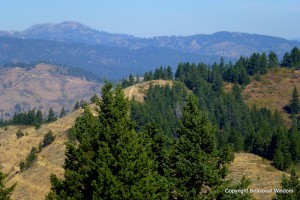
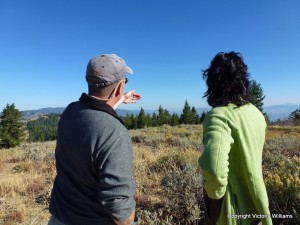
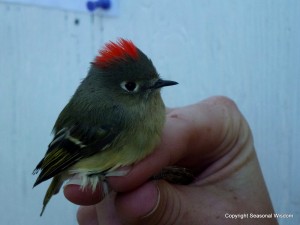
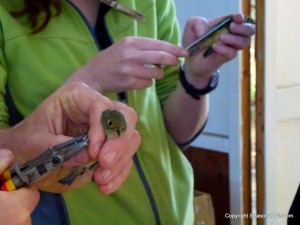
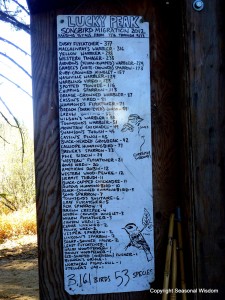
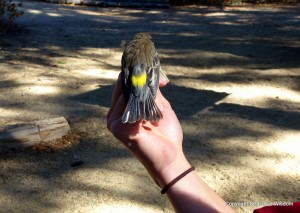



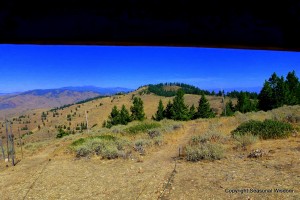
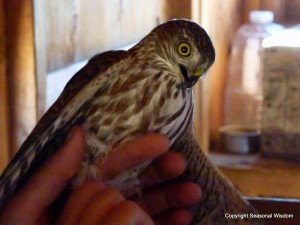
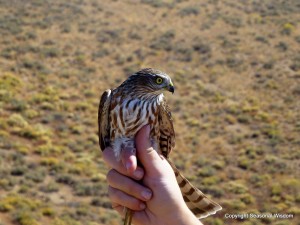
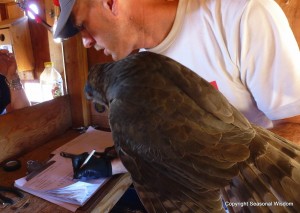
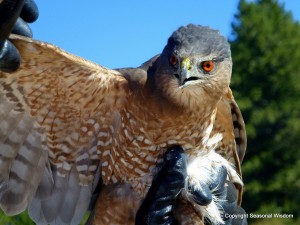
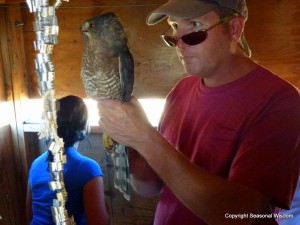
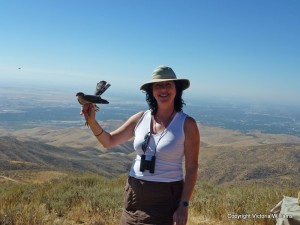
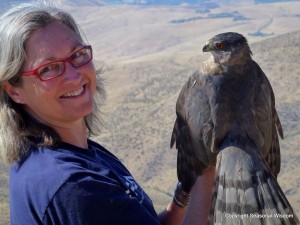
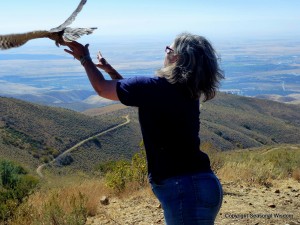











Comments on this entry are closed.